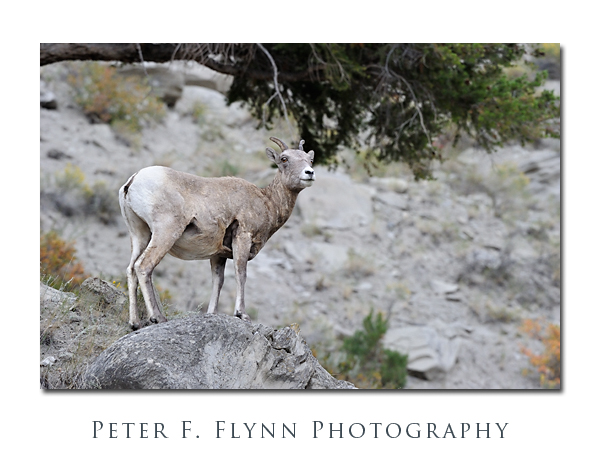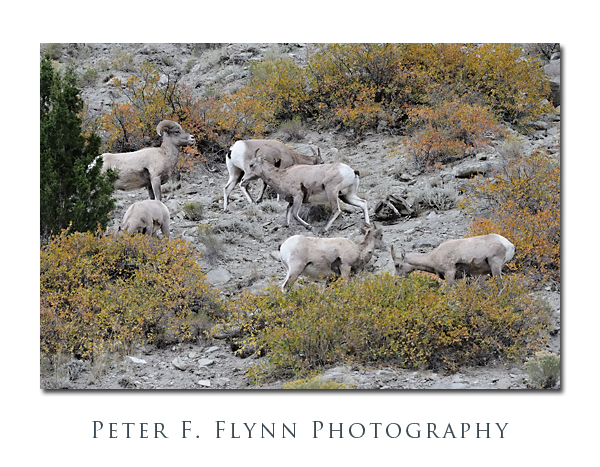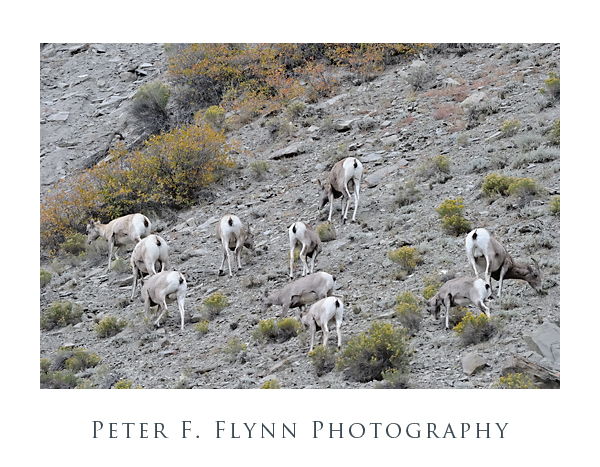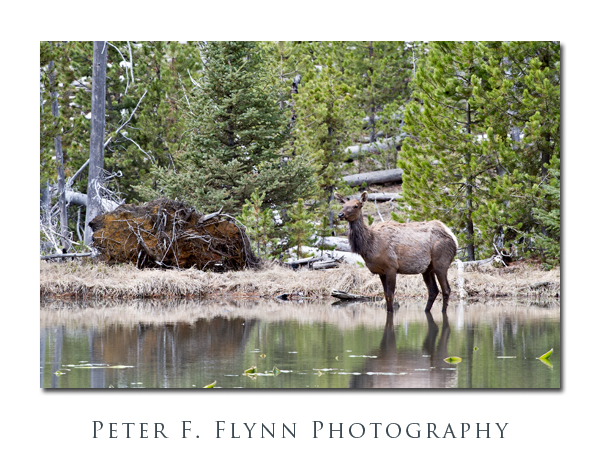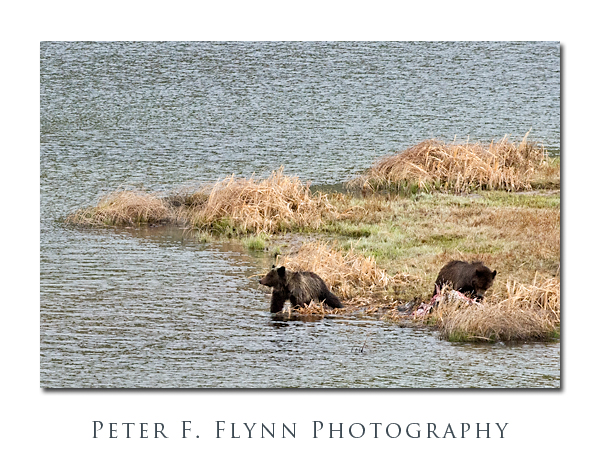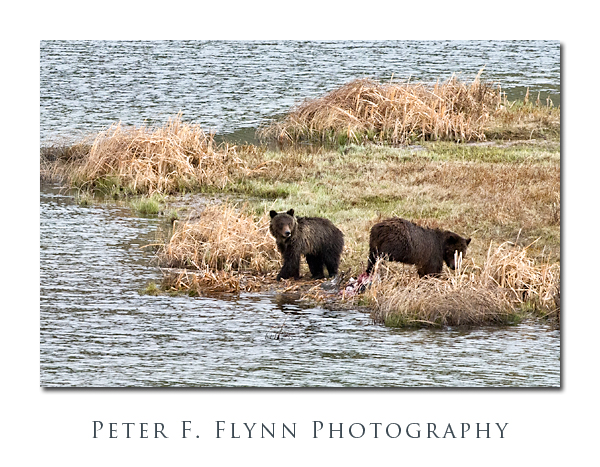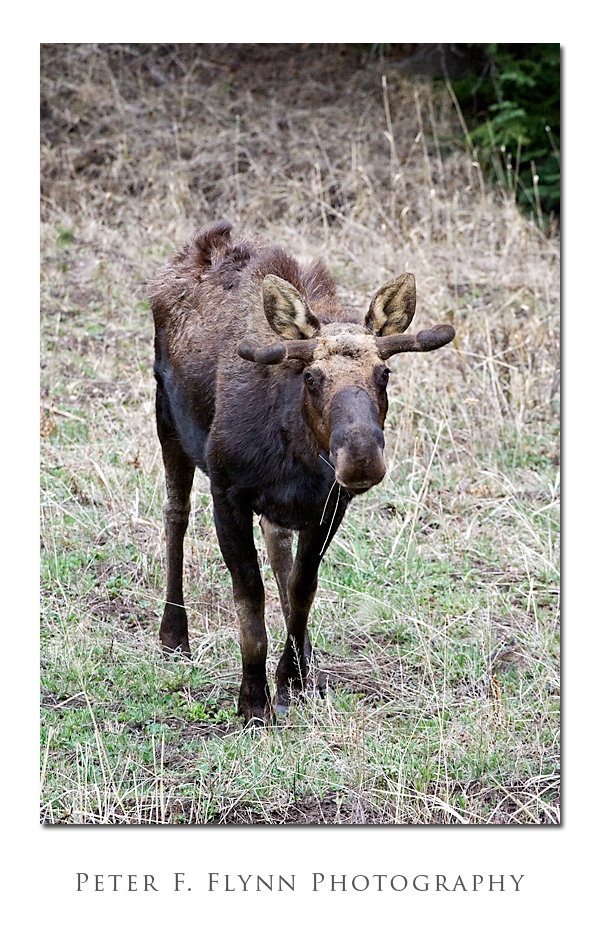Let’s be frank, a visit to Yellowstone National Park is really about seeing the animals*. In a single day, it is about even-odds of viewing Bears, Bison, Elk, and Pronghorn. Wolves and Big Horn Sheep though, are on the special list. We’ll leave Wolves for another discussion, in this entry we’ll focus on Bighorn Sheep.
Ask any ranger where you are likely to see Bighorn Sheep, and they will most likely nominate the North Entrance Road between Mammoth Hot Springs and Gardiner, MT. Alternatively, you might well see one or two Bighorns near the ridge above the Yellowstone River picnic area, and Yankee Jim Canyon north of Gardiner is another possibility. Anyway, back to the North Entrance Road… The road runs north between Mammoth and Gardiner, a distance of about 5 miles. Two miles out of Mammoth the road joins the Gardner River**, and the road follows the Gardner until it runs into the Yellowstone River. About halfway between Mammoth hot Springs and Gardiner (MT) the road and river pass near to steepish cliffs of Gardner Canyon. This is the place that; if you are patient and a bit lucky, you may see a herd of Bighorns.
If you stalk the Bighorn from the North Entrance Road, you will naturally be shooting from below the animals – shots like the one shown below are inevitable…
The images in this entry were recorded at about 18:00 MDT on September 22, 2010, using the Nikon D3s and the AF-S VR Zoom-NIKKOR 200-400mm f/4G IF-ED at 400mm. Exposures were in the vicinity of f/11 and 1/400s (+0.33 EV, corrected in RAW conversion), ISO 6400. RAW conversion, noise reduction, and capture sharpening conducted using Nikon NX2. Further processing, including contrast enhancement (curves), local contrast enhancement (USM), and output sharpening (USM) conducted using Photoshop CS5.
*Here’s a question, if not for the animals, would you visit Yellowstone? Sure, once or twice to see the thermal works, but how often after?
**Note that the town is named Gardiner, while the river is Gardner – kinda silly.
This entry edited September 24, 2001 to convert Big Horn references to Bighorn.
Copyright 2011 Peter F. Flynn. No usage permitted without prior written consent. All rights reserved.
